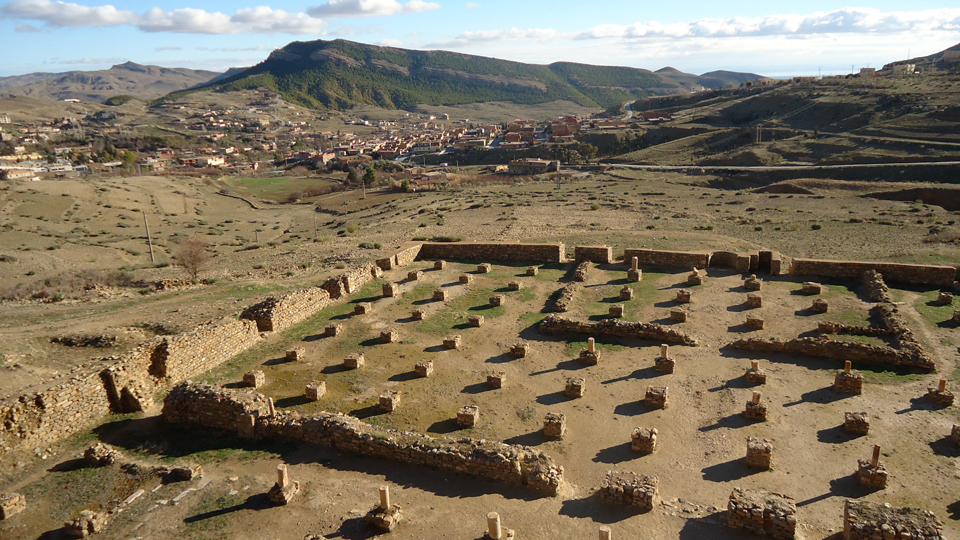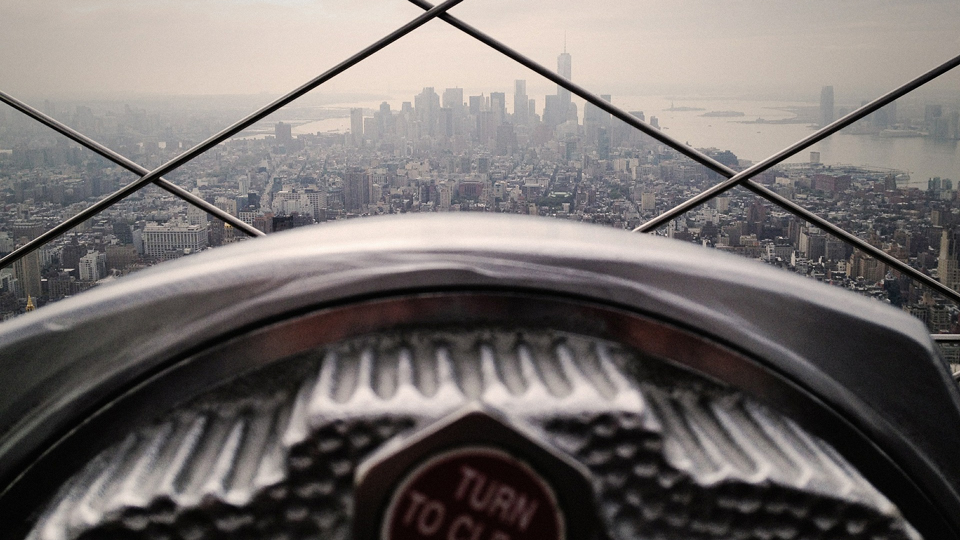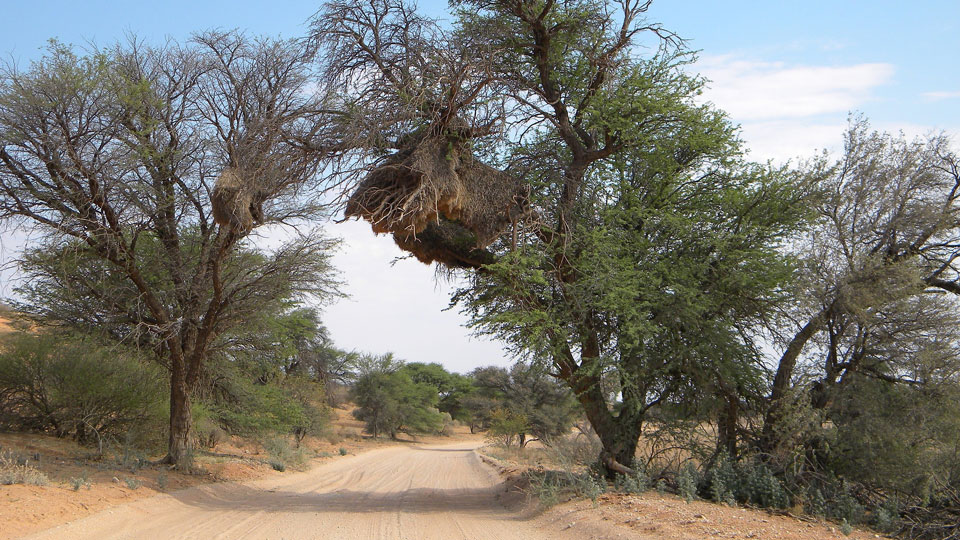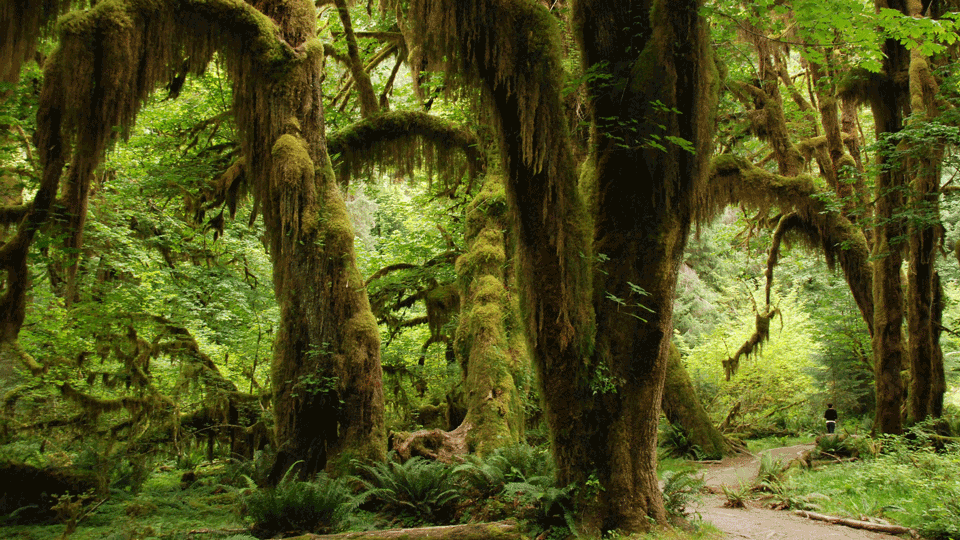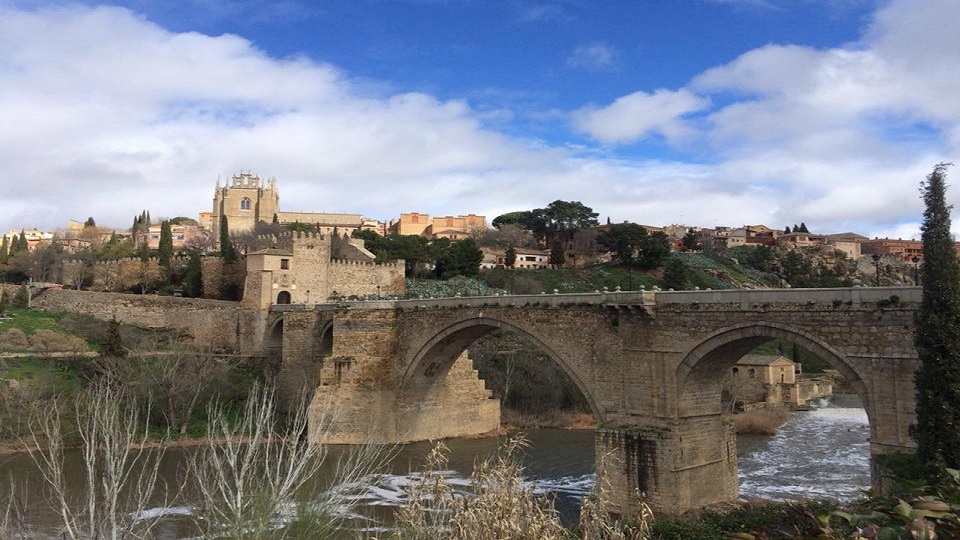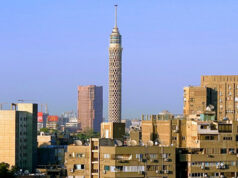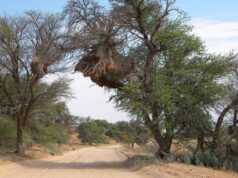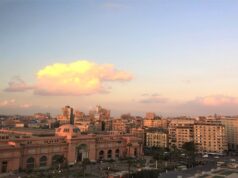Al Qal’a of Beni Hammad: Unveiling Algeria’s Majestic UNESCO Gem – A Visitor’s Guide
Echoes of a Lost Capital in the Algerian Mountains
Imagine journeying to a place where history whispers on the mountain winds, where the remnants of a once-glorious capital lie waiting to be discovered, far from the well-trodden tourist trails. This is Al Qal’a of Beni Hammad, a UNESCO World Heritage site nestled in the breathtaking mountainous landscape of Algeria.1 Founded in 1007 AD by Hammad ibn Buluggin, this fortified palatine city was the very first capital of the Hammadid dynasty.2 Today, its ruins offer an authentic and evocative glimpse into the world of a fortified Muslim city of the 11th century, a testament to a powerful, yet ultimately vanished, civilization.1
This remarkable site, though now in ruins, retains a powerful sense of its past grandeur. The very fact that it remains “hardly visited” 1 and that “very few people visit this UNESCO World Heritage site” 4 transforms a visit into a unique journey of discovery. For the discerning traveler seeking experiences beyond the crowded landmarks, Al Qal’a offers an unparalleled opportunity to connect with history in a serene and contemplative setting. This relative seclusion, while posing challenges for site revenue, becomes a distinct advantage for those who cherish the thrill of exploring a place that feels like a hidden secret. Furthermore, the consistent emphasis across historical and archaeological accounts on Al Qal’a providing an “authentic picture of a fortified Muslim city” 1 underscores its profound historical value. In an age where many heritage sites have undergone extensive reconstruction, the genuine ruins of Al Qal’a offer a direct, unfiltered portal to the past, contributing significantly to its “Outstanding Universal Value” as recognized by UNESCO.1
This guide will take you on a journey through time, exploring the storied past of Al Qal’a, its architectural marvels, and its enduring legacy. It will also provide practical advice to help you plan your own unforgettable expedition to this extraordinary corner of Algeria.
Table 1: Al Qal’a of Beni Hammad at a Glance
| Feature | Description |
| Location | M’Sila Province, near Maadid, Algeria; on the southern flank of Djebel Maâdid 1 |
| Founded | 1007 AD by Hammad ibn Buluggin 1 |
| Dynasty | Hammadid (served as its first capital) 2 |
| UNESCO Inscription | 1980; Criterion (iii) – exceptional testimony to Hammadid civilization 1 |
| Key Features | Ruins of the Great Mosque & Minaret, Palaces (Dar al-Bahr, Qasr al-Manar), 7km Fortifications 1 |
| Altitude | Approximately 1,000 metres (some sources indicate up to 1,418 metres for the broader area) 1 |
| Historical Status | Fortified palatine city, military stronghold, centre of commerce and culture 2 |
This table provides a quick snapshot, allowing an immediate grasp of the site’s fundamental characteristics before delving into the richer details of its history and what awaits the modern visitor.
A Storied Past: The Rise and Fall of Al Qal’a of Beni Hammad
The Hammadid Genesis: Founding a Capital (1007 AD)
The story of Al Qal’a of Beni Hammad begins in 1007 AD, with its founding by Hammad ibn Buluggin, the son of Bologhine who himself was the founder of Algiers.1 This was not a randomly chosen location; the city was conceived “to embody power” and established as a formidable military stronghold.1 Its position in a defensible mountainous area, on the southern slopes of Djebel Maâdid, was a strategic masterstroke, offering natural protection and a commanding view over the surrounding territory.1
A Flourishing Metropolis: Life in Al Qal’a
For a time, Al Qal’a of Beni Hammad experienced a period of “great splendour”.1 It quickly evolved beyond its military origins to become a vibrant centre of commerce, attracting caravans and traders from across the vast expanse of the Maghreb, and even from as far afield as Iraq, Syria, Egypt, and the Hejaz.7 The 11th-century chronicler Al-Bakri described it as a large and powerful city. Beyond trade, it blossomed into an intellectual and cultural hub. Ibn Khaldun noted that the city’s wealth of resources drew scholars, poets, sages, and theologians, making it a beacon of learning and artistic expression in the region.7
The Tides of Change: Abandonment and Eventual Ruin (1090 & 1152 AD)
The golden age of Al Qal’a, however, was destined to be relatively brief, a common narrative for many powerful urban centers in a volatile era marked by shifting allegiances and military conquests. The city’s rapid ascent to “great splendour” was followed by a decline that underscores the precarious nature of power. In 1090 AD, under the looming threat of the Hilalian invasion, the Hammadids made the difficult decision to abandon their capital.1 While the Hammadid dynasty continued, eventually moving their capital to the coastal city of Bejaïa 9, Al Qal’a’s fate was sealed. The final blow came in 1152 AD when the city was demolished 1, an act attributed to the Almohads, the succeeding dynasty in the region.4 Within approximately 150 years of its founding, this once-thriving metropolis was reduced to ruins, its story becoming one of a “lost” or “vanished” civilization.1
The strategic mountainous location, initially a key asset for defense 1, may have inadvertently played a role in its vulnerability. While offering security, such a position could also lead to isolation, making it difficult to withstand larger, determined invading forces or adapt to evolving trade routes that might have increasingly favored more accessible coastal centers like Bejaïa. The move of the capital by the Hammadids themselves suggests a shift in strategic priorities, perhaps towards maritime commerce or different defensive considerations against new regional threats.
A Legacy Etched in Stone: Why Al Qal’a is a UNESCO World Treasure
Al Qal’a of Beni Hammad was inscribed as a UNESCO World Heritage site in 1980, a recognition of its profound historical and cultural significance. Its value lies not just in its impressive ruins, but in the stories they tell and the influence they wielded.
Outstanding Universal Value: A Testament to a Vanished Civilization
The primary justification for its UNESCO status is captured in Criterion (iii): Al Qal’a of Beni Hammad “bears exceptional testimony to the Hammadid civilization now disappeared”.1 The site is considered one of the “most interesting and most precisely dated monumental complexes of the Islamic civilization” from that period, offering an authentic and invaluable window into the urban planning, architecture, and societal structures of a fortified Muslim city during the Hammadid era.1 The archaeological and monumental vestiges, including the Great Mosque, its minaret, and the series of palaces, are the principal resources that testify to the wealth, influence, and cultural refinement of this Hammadid civilization.1
Architectural Influence Across the Maghreb and Beyond
The architectural innovations and style developed at Al Qal’a did not exist in a vacuum. The city’s design and structures influenced the development of Arab architecture across the Maghreb, and its impact was felt as far as Andalusia in Spain and Sicily.1 Some scholars even suggest that Hammadid architecture influenced that of the Normans.7 The minaret of the Great Mosque, in particular, is often cited as a prototype for later minarets, including, some argue, the Giralda in Seville.10
This dual role – as a recipient of diverse artistic currents and a subsequent source of inspiration – positions Al Qal’a as a more significant cultural and architectural nexus than its relatively short lifespan or seemingly remote location might suggest. The architectural elements found at the site show a “wide range of artistic and cultural influences,” including from Fatimid Egypt, Samarra (in present-day Iraq), and Aghlabid Kairouan (in Tunisia), alongside Andalusian Spain.4 This indicates that despite its inland, mountainous setting, Al Qal’a was deeply connected to the broader artistic and architectural trends of the Islamic world, actively participating in a vibrant exchange of ideas.
The preservation of Al Qal’a presents a unique situation. While its “integrity is assured,” the ancient vestiges “remain vulnerable to natural degradation and weathering”.1 Paradoxically, the very low number of annual visitors means that “tourism does not constitute a threat for its conservation”.1 This creates a delicate balance for the site’s managers, the Office National de Gestion et d’Exploitation des Biens Culturels Protégés (OGEBC).1 There is a potential desire to increase visitor numbers for economic benefits and to raise awareness of this heritage, yet this must be managed carefully to prevent exacerbating the natural decay of the fragile ruins. The current “hardly visited” status is thus a double-edged sword, offering a pristine experience for the few who come, but limiting resources for extensive conservation.
Exploring the Ruins: A Walk Through Hammadid Grandeur
Walking through Al Qal’a of Beni Hammad today is an exercise in historical imagination, stepping back a millennium into a world of emirs, bustling courtyards, and spiritual devotion. Though time has taken its toll, the scale and layout of the city remain impressively evident.
The Great Mosque: A Spiritual Heartbeat
The Great Mosque of Al Qal’a was a monumental structure, once one of the largest in Algeria, surpassed only by that of Mansourah.1 Its prayer hall was vast, featuring 13 aisles or naves, each with eight bays, creating an expansive space for congregational worship.1 The mosque complex was rectangular, originally measuring approximately 63 metres in length and 53 metres in width, with the prayer room itself being 53 metres by 34 metres.9 A large courtyard, around 53 metres by 26 metres, would have been a central gathering point.9
Today, visitors can trace the foundations of this grand edifice. While most of the columns have vanished, their bases and the layout of the prayer hall can still be discerned.9 The base of the mihrab (the niche indicating the direction of Mecca) is also visible, though truncated.9 In the courtyard, the remains of a large cistern, which once supplied water, can be found, though its vault is partially collapsed.9
The Unmissable Gem: The Enduring Minaret – A Beacon of History
Standing tall amidst the ruins, and indeed the most iconic and “amazing” feature of Al Qal’a, is the minaret of the Great Mosque. This is the structure that most vividly conveys the site’s former stature. It currently reaches a height of 24.70 metres, though its original height was likely around 25 metres (approximately 82 feet).7 This square tower, characteristic of the Maghrebi architectural style, is considered the oldest minaret in Algeria after that of Sidi Boumerouane.1
The minaret’s construction featured a staircase of one hundred and twenty-seven steps winding around its central core.9 Its exterior, particularly the southern façade, was once adorned with ceramic embellishments, and traces of these, possibly blue tiles, can still be detected.9 The decoration was carefully organized into three vertical registers, featuring motifs such as palmettes, scrolls, various forms of arches (pointed and round), and blind niches.4 Its elegant design has led to comparisons with the famous Giralda in Seville.7 For many visitors, the minaret is the first and last major structure they see, a powerful symbol of the Hammadid civilization’s architectural prowess and enduring legacy, even in its ruined state. Its height and prominent position make it the undisputed visual anchor of Al Qal’a.
Palatial Dreams: Glimpses into Royal Life
The Hammadid emirs constructed a series of impressive palaces within the city walls, showcasing their wealth and sophisticated lifestyle.1 Though most are now destroyed 7, their remains offer tantalizing glimpses into royal life.
-
Dar al-Bahr (The Lake Palace / Qasr al Bahr / Qasr al Mulk): This was likely the grandest of the palaces, possibly used for public audiences by the Emir or as his primary residence.4 Its name, “Palace of the Sea,” was inspired by an enormous rectangular water basin, measuring approximately 67-68 metres by 47-48 metres and 1.3 metres deep.3 This was not merely a decorative pool; a ramp at one end suggests it was used to launch boats, and contemporary accounts even mention “nautical displays” taking place here.3 Imagine the spectacle! The basin was surrounded by porticos, accessed via a monumental entrance, and adjoined by an elevated terrace and extensive gardens.3 The creation of such an elaborate water feature, complete with dynamic displays, in a mountainous region at an altitude of over 1,000 metres 1 speaks volumes about the Hammadids’ engineering capabilities and their desire to project an image of immense power and luxury – a common theme in Islamic palatial architecture where water often symbolized paradise and control over resources.
-
Qasr al-Manar (Palace of the Fanal / Castle of the Beacon Light): The keep of this palace remarkably survives.7 It was a fortified structure, possibly serving as a watchtower, built into one of the city walls using ashlar stone masonry.4 The upper palace section consisted of three buildings arranged around an irregularly shaped forecourt, including a private apartment and a domed hall.4 The architectural style of some of its square rooms has drawn comparisons to Almohad minarets and the Torre Pisana in Palermo.7
-
Qasr al-Salam: This palace is thought to have been the residence of the ruler’s family and is considered to encapsulate many typical features of Hammadid architecture.7 Significantly, fragments of stucco discovered here may represent some of the oldest examples of muqarnas (stalactite-like decorative vaulting) in the Western Islamic world, dating to the 11th or 12th century.7
-
Qasr al-Kawab: Another of the Hammadid palaces, though fewer specific details about its layout and function are available from the current archaeological record.7
Excavations across the palace areas have brought to light numerous artifacts, including terracotta, jewels, coins, ceramics, ornamental fountains (some using lion motifs), carved marble water channels, and parts of frescos that once adorned interior walls, all testifying to the “great refinement of the Hammad civilization”.1 Yet, much may still lie hidden; reports indicate that the palace gardens, for instance, “have not yet been explored by archeologists” 3, and indeed, “most of the site remains unexplored”.7 This tantalizing prospect of future discoveries adds another layer of intrigue to Al Qal’a, suggesting that our understanding of this fascinating civilization is still evolving.
The City Walls: Fortifications of a Powerful Emirate
Enclosing this magnificent city was a formidable 7-kilometre-long line of partially dismantled fortified walls.1 These ramparts protected the four main residential complexes and all the palatial and religious structures within, underscoring Al Qal’a’s role as a secure capital and military stronghold.7
Your Adventure Itinerary: Top Things to See and Do at Al Qal’a
A visit to Al Qal’a of Beni Hammad is a journey of discovery. For sites such as this, where “little more than the foundations remain” for some of the once-grand structures 12, the experience is significantly enriched by engaging one’s imagination, guided by the historical context. The goal is not just to see stones, but to envision the vibrant city that once stood here. Here’s a list to guide your exploration:
- Admire and Photograph the Iconic Minaret: This is the undisputed centerpiece. Marvel at its height, its resilient structure, and the traces of its ancient decoration against the backdrop of the Algerian mountains. While one past visitor account mentions climbing it 10, this should only be attempted if explicitly permitted and deemed safe by current site authorities. Appreciating its architectural grandeur and historical importance from ground level is, in itself, a profound experience.
- Explore the Expansive Great Mosque Ruins: Walk among the foundational outlines of the prayer hall, attempting to visualize its 13 naves. Locate the remnants of the mihrab and the large cistern in the central courtyard.9
- Wander the Ruins of Dar al-Bahr (Lake Palace): Stand by the vast basin and try to conjure images of the Hammadid emirs enjoying nautical spectacles.3 Picture the surrounding porticos bustling with activity and the once-lush gardens.
- Trace the Ancient City Walls: Follow sections of the 7km fortifications 1, pondering the city’s defensive strategies and the lives of those who guarded it.
- Discover Other Palatial Remains: Seek out the ruins of Qasr al-Manar (Palace of the Fanal), noting its surviving keep.7 Try to identify the locations of other mentioned palaces like Qasr al-Salam, imagining the royal life they once housed.
- Soak in the Panoramic Views: The site’s elevated position (1,000m-1,400m) on the southern flank of Djebel Maâdid offers truly “striking beauty” and “extraordinary beauty”.1 Take time to absorb the magnificent mountainous landscape that surrounds and cradles the ancient city.
- Reflect on a Lost Civilization: Find a quiet spot amidst the ruins to contemplate the rise and fall of the Hammadid dynasty, their cultural achievements, and the inexorable passage of time that has transformed a bustling capital into these evocative remains.
- Look for Architectural Details: Keep an eye out for any surviving decorative elements – a fragment of carved stone, a hint of ancient plasterwork, the precise cut of the masonry – that speak to the “great refinement of the Hammad civilization”.1
- Visit the Local Museum (if accessible): An earlier study mentioned exploring “the site’s museum, and using its vast collection”.5 The OGEBC contact for the M’sila region is listed as “M’sila Musée d’Elhodna” 13, suggesting the potential presence of a local museum that might house artifacts from Al Qal’a or provide further context. Inquiring about this locally could be worthwhile.
Planning Your Pilgrimage to Al Qal’a of Beni Hammad
Careful planning is key to a rewarding visit to Al Qal’a, given its historical nature and relatively remote location. Visiting a site like this requires a degree of self-sufficiency and preparedness, which contributes to the sense of adventure but also means attending to practical details beforehand.
When to Go: Best Seasons for Your Visit
The most favorable times to visit Al Qal’a of Beni Hammad are during the spring (March to May) and autumn (September to November) months.14 During these periods, the weather is generally pleasant and mild, with comfortable temperatures ideal for exploring the extensive outdoor ruins and appreciating the natural beauty of the surrounding landscape without the extremes of summer heat or winter chill.14 Spring often brings blooming landscapes, while autumn may offer fewer crowds compared to peak seasons elsewhere.15
Getting There: Your Route to Algeria’s Historic Heart
Al Qal’a of Beni Hammad is situated in the M’Sila Province, approximately 36 km north-east of the town of M’Sila and about 225-250 km south-east of Algiers.1 The ruins are near the small town of Maadid (also known as Maadhid or Bechara) and lie on the southern flank of Djebel Maâdid.1
Reaching the site can be an adventure in itself. One visitor described it as “quite a ride to get there, being the most remote site in terms of access from any nearby town with an airport,” noting potential challenges like “bad traffic, speed bumps, fog even, twisted roads as you get closer”.10
From Algiers:
- By Bus + Local Transport: Take a bus from Algiers to a nearby town like Bordj Ghédir (approx. 4 hours 15 minutes to 4 hours 45 minutes).16 From there, you would need to arrange local transport (taxi or potentially hitch-hike, as one account suggests for the final leg 10) to Al Qal’a.
- By Car (Self-Drive or Hired): Driving directly from Algiers is the fastest option, taking approximately 3 hours and 11 minutes to cover the roughly 252 km distance.16 This offers the most flexibility for exploring.
- By Train + Local Transport: Take a train from Algiers (Agha station) to Bordj Bou Arreridj (approx. 3 to 5 hours, depending on the service).16 From Bordj Bou Arreridj, you would then need to secure local transport to the site.
- By Taxi/Private Hire: This would be the most expensive but potentially most convenient door-to-door option.16
Given the site’s remoteness and the potential complexities of coordinating multiple transport legs, hiring a car with a driver or joining an organized tour is highly recommended for ease of access and a more stress-free experience.
Table 2: Transportation Snapshot from Algiers to Al Qal’a Vicinity
| Mode | Approx. Travel Time (to hub/site) | Key Transfer Point / Destination | Approx. Cost (USD, from snippets) | Notes |
| Self-Drive | 3h 11m+ | Al Qal’a of Beni Hammad | $8-$11 (fuel estimate) 16 | Offers most flexibility. |
| Bus + Local Transport | 4h 45m+ | Bordj Ghédir, then to site | $12-$17 (bus only) 16 | Requires arranging onward travel from Bordj Ghédir. |
| Train + Local Transport | 5h+ | Bordj Bou Arreridj, then to site | $27-$40 (train only) 16 | Requires arranging onward travel from Bordj Bou Arreridj. |
| Taxi / Private Hire | 3h 11m+ | Al Qal’a of Beni Hammad | $100-$130 16 | Most direct, but highest cost. |
Note: Travel times and costs are approximate and subject to change. Local transport from transfer points will incur additional costs and time.
Visitor Essentials: Operating Hours, Entry, and Facilities
It is important to note that specific, official current operating hours and entrance fees for Al Qal’a of Beni Hammad are not consistently detailed in readily available public sources or the research material provided for this guide. The site is managed by the Office National de Gestion et d’Exploitation des Biens Culturels Protégés (OGEBC).1 One visitor account from some years ago mentioned a “small entrance fee” 10, but this requires official, current confirmation.
For the most up-to-date information, it is strongly advised to:
- Contact the regional OGEBC office: M’sila Musée d’Elhodna, Responsable: M Adel TAHI, Mobile: +213 (0) 655 51 89 81, Email: museum.kalaa@yahoo.com.13
- Inquire through local tourist information offices in M’Sila or Algiers.
- Consult with your chosen tour operator, as they should have current details.
The OGEBC is the official body responsible for the site’s management and presentation.1 However, UNESCO has noted that “The need for funding and specialised professional personnel is still very important for the implementation of the plan” for such sites.1 This reality might contribute to the scarcity of widely publicized, standardized visitor information online, making direct contact with the local OGEBC branch even more critical for planning.
Facilities at such a remote archaeological site are likely to be basic. Given that Al Qal’a is “hardly visited” 1, extensive on-site amenities like cafes or large visitor centers are improbable. Visitors should come prepared with their own water, snacks, sun protection, and any other necessities.
Where to Stay & Dine: Accommodation Near Al Qal’a
Accommodation is not available directly at the ruins. Visitors will need to look for hotels and guesthouses in nearby larger towns such as M’Sila or Bordj Bou Arreridj.
- In Bordj Bou Arreridj, options like Hotel Beni Hamad have been mentioned.19
- In M’Sila, Hotel Kalaa is a possibility, though reviews for these establishments can be mixed, so it’s advisable to check recent feedback on booking platforms.20
- Booking platforms such as Booking.com and Expedia (which includes Hotels.com) can be used to search for current availability and reviews.20
Dining options will also primarily be found in these towns. This is an excellent opportunity to try local Algerian cuisine. Specific restaurant recommendations for M’Sila are scarce in the available information, so asking for local advice upon arrival or from hotel staff is a good strategy.
Table 3: Nearby Accommodation Hubs & Considerations
| Town | Approx. Distance to Al Qal’a | Types of Accommodation | General Notes |
| M’Sila | ~36 km | Hotels | Provincial capital; likely more amenities, dining options. 1 |
| Bordj Bou Arreridj | Further than M’Sila | Hotels | A larger town with some hotel options; a potential transport hub. 19 |
| Maadid | Very close | Unlikely (small town) | May have very basic local eateries, but unlikely formal accommodation. 2 |
Essential Traveler Tips for a Memorable Visit
A little preparation goes a long way in ensuring a comfortable and respectful visit to Al Qal’a and Algeria in general.
- Dress Code: Modesty is appreciated. For both men and women, covering shoulders and knees is advisable when visiting cultural sites and in general. For women, long-sleeved shirts and long trousers or skirts are recommended.23 While Al Qal’a is an archaeological ruin, adhering to local customs regarding dress shows respect.
- Safety: Exercise standard safety precautions: keep belongings secure and be aware of your surroundings.25 For remote archaeological sites like Al Qal’a:
- Consider hiring a reputable local guide who knows the area well.26
- If traveling independently, inform someone of your itinerary and expected return time.
- Carry a fully charged mobile phone.
- Avoid displaying expensive items or large amounts of cash.25
- While Al Qal’a is not in the immediate border regions that carry higher travel advisories for Algeria, general caution for remote areas is prudent.
- Cultural Etiquette: Always ask for permission before photographing people.24 Behave discreetly and show respect for local traditions and religious sensitivities.26
- What to Pack:
- Comfortable walking shoes are essential, as the terrain at archaeological sites is often uneven.24
- Effective sun protection: a wide-brimmed hat, sunglasses, and high-SPF sunscreen.24
- A refillable water bottle to stay hydrated.24
- Layers of clothing, as temperatures can vary, especially in mountainous regions.23
- Wet wipes or hand sanitizer can be useful.23
- Important: Binoculars are reportedly illegal to bring into Algeria, so leave them at home.27
- Health: Drink only bottled water.25 Carry a basic first-aid kit for minor issues.
- Police Escort: Be aware that in certain parts of Algeria, tourist groups may be accompanied by tourist police convoys for security. This can sometimes extend journey times.27
Capturing the Magic: Photography Hotspots at Al Qal’a
Al Qal’a of Beni Hammad, with its dramatic ruins and stunning natural backdrop, is a photographer’s delight. The images captured here can do more than just serve as personal mementos; when shared respectfully, they can raise awareness of this lesser-known UNESCO gem, subtly advocating for its continued preservation, especially given its vulnerability to natural elements.1
Here are some suggestions for “great photos to get at the site”:
- The Majestic Minaret: This is the star. Capture it against the vastness of the sky and the rugged silhouette of the Djebel Maâdid mountains. Experiment with different angles and times of day.
- Panoramic Vistas: Seek out accessible elevated viewpoints to capture wide shots of the entire ruined city. These images can convey the impressive scale of Al Qal’a and its harmonious integration within the “mountainous site of extraordinary beauty”.1
- Architectural Close-Ups: Focus on any surviving details: the texture of the ancient stonework, traces of ceramic tile decoration on the Minaret 4, carvings, or the structural lines of the mosque foundations and palace ruins. These details tell the story of Hammadid craftsmanship.
- Dar al-Bahr’s Grandeur: Try to capture the expanse of the great water basin, even in its ruined state, evoking a sense of its former magnificence and the famed nautical displays.
- The Ancient Fortifications: Photograph the lines of the city walls as they stretch across the landscape, hinting at the city’s defensive might.
- The Essence of a Fortified City: Look for compositions that convey the “authentic picture of a fortified Muslim city” 1 – perhaps the interplay between ruined residential or palatial structures and the strong defensive walls.
- Light is Key: The “golden hours” of early morning or late afternoon will provide softer, more dramatic light, casting longer shadows that enhance the textures and contours of the ruins, bringing them to life.
Treasures from Your Travels: Souvenir Ideas from Algeria
While you are unlikely to find site-specific souvenirs at the remote ruins of Al Qal’a itself, your journey through Algeria, particularly in towns like M’Sila or cities like Algiers, offers wonderful opportunities to acquire authentic crafts that serve as meaningful mementos. Choosing locally made, traditional items not only provides you with a unique keepsake but also supports local artisans and helps preserve Algeria’s rich cultural heritage.
Consider these popular Algerian souvenirs 28:
- Traditional Pottery: Look for pieces from the Kabyle region, renowned for their vibrant colors and intricate geometric patterns, often in red, black, and yellow. Bowls, plates, and decorative vases make excellent choices.
- Carpets and Rugs: Handmade Berber rugs are a prized craft. Those from Ghardaia or the M’zab Valley are particularly noted for their unique designs, natural dyes, and the stories woven into their patterns.
- Silver Jewelry: Traditional Kabyle silver jewelry is stunning, often adorned with coral, amber, and colorful enamel. Necklaces, bracelets, earrings, and brooches can be found, each piece often carrying symbolic meaning.
- Ceramic Tiles (Zellige): These hand-painted tiles, famous for their intricate geometric patterns and bright colors, are a hallmark of North African craftsmanship. Individual tiles can be framed or used as decorative accents.
- Dates (Deglet Nour): Algeria is famous for its high-quality dates, particularly the Deglet Nour variety. These make a delicious and easily transportable gift or treat for yourself.
- Local Spices: Aromatic spice blends like Ras el Hanout capture the flavors of Algerian cuisine.
- M’Sila Region Crafts: As Al Qal’a is in M’Sila province, keep an eye out for local art or prints from M’Sila town if your travels take you there. One source mentions the availability of “wall art and framed prints that showcase the beauty, culture, and heritage of Algeria’s M’Sila region” through certain vendors, which could be a very relevant find.29
- Other Notable Items: Traditional clothing such as the Gandoura or Burnous, Djouzia (a sweet confection, especially from Constantine), intricately carved wooden items, perfumed soaps made with local ingredients like olive oil or figs, high-quality Argan or olive oil, and dried figs are also excellent choices.28
Guided Explorations: Tour Operators for Your Algerian Adventure
Given Al Qal’a of Beni Hammad’s remote location and the depth of its history, engaging a tour operator can significantly enhance your visit, providing logistical ease, expert interpretation, and a richer overall experience. For such niche destinations, specialized tour operators with strong local knowledge often provide the most insightful and well-organized trips.
Several tour operators are known to offer tours in Algeria, some of whom may include Al Qal’a in their itineraries or could potentially customize a trip to include it:
- Mosaic North Africa: This operator specializes in private, custom tours across North Africa, including Algeria.30 They explicitly mention Al Qal’a of Beni Hammad in the context of exploring Algeria’s UNESCO World Heritage sites, indicating a familiarity with the location.11
- Explore Worldwide: This company offers various tours in Algeria, such as their “Wonders of Ancient Algeria” or “Ancient Algeria & the Sahara Desert” itineraries.27 While Al Qal’a might not be a standard inclusion in all their packages, it’s worth inquiring if it can be incorporated.
- Vincent Vacations: This agency lists travel packages for various Algerian destinations.33 (It’s worth noting a geographical inaccuracy in one of their descriptions regarding Al Qal’a’s proximity to Bechar; the site is near M’Sila 1).
- Daytrip: This service connects travelers with local drivers for city-to-city transfers and offers the option to include sightseeing stops like Beni Hammad Fort on routes such as Algiers to Biskra.12 This is more of a transport-with-sightseeing service than a fully guided tour.
Important Note on Affiliate Programs:
While these operators provide tours in Algeria, the available research does not contain specific, current information about their active affiliate programs, particularly for tours that definitively include Al Qal’a of Beni Hammad. It is strongly recommended that you contact these tour operators directly to inquire about their current itineraries, options for visiting Al Qal’a, and any available affiliate partnership opportunities.
Beyond Al Qal’a: Exploring Nearby and Related Algerian Heritage
A visit to Al Qal’a of Beni Hammad can be wonderfully complemented by exploring other sites that provide further context to its history and Algeria’s rich cultural tapestry.
- National Museum of Antiquities and Islamic Art (Algiers): A visit to this museum in Algiers is highly recommended either before or after your trip to Al Qal’a. It houses significant “marble or plaster sculptures of the 11th century Qal’a of Beni Hammad,” alongside other artifacts recovered from the site.35 Seeing these treasures firsthand can help you better visualize the “great refinement” 1 of the Hammadid civilization, bridging the gap between the evocative ruins and the intricate artistry that once adorned them. This creates a more holistic heritage journey, where the ruins tell one part of the story, and the preserved artifacts in the museum tell another.
- Other UNESCO Sites in Algeria: Algeria is home to several other fascinating UNESCO World Heritage sites that could form part of a broader exploration of the country. These include the stunning Roman ruins of Djémila, Timgad, and Tipasa, the unique urban landscape of the M’Zab Valley, and the historic Kasbah of Algiers.11
- M’Sila Town & Province: If time permits, consider spending some time in M’Sila, the provincial capital. This can offer a glimpse into contemporary life in the region surrounding Al Qal’a, providing a contrast to the ancient historical site.
Conclusion: The Enduring Allure of Al Qal’a of Beni Hammad
Al Qal’a of Beni Hammad is more than just a collection of ancient stones; it is a portal to a powerful, sophisticated, yet ultimately vanished Islamic capital. Its ruins, set against a backdrop of extraordinary natural beauty, offer a profound sense of discovery, far removed from the clamor of mass tourism. The journey to Al Qal’a, its partially excavated state 7, and the imaginative effort required to reconstruct its past grandeur 12 can be seen as a metaphor for the very process of historical and archaeological discovery – the patient piecing together of a narrative from the fragments left behind.
This UNESCO World Heritage site stands as a critical testament to the Hammadid civilization, offering invaluable insights into North African urbanism, architecture, and palatial culture of the 11th century. For the traveler willing to venture to its historic embrace, Al Qal’a of Beni Hammad promises not just a visit, but an experience – a quiet dialogue with a remarkable past, and an unforgettable highlight of any Algerian journey.
Learn more about the UNESCO World Heritage List
Check out our UNESCO World Heritage index page for the latest full list of sites, complete with links to our dedicated destination pages.
Only interested in the most important sights? Choose from the Faber Dozen: UNESCO World Heritage Edition to see our fifteen best ideas for an unforgettable trip.
Just Browsing? Go back to the narangah Travel home page to uncover a wealth of travel information about destinations near and far. Imagine yourself there, and let us take you exploring around the world!

